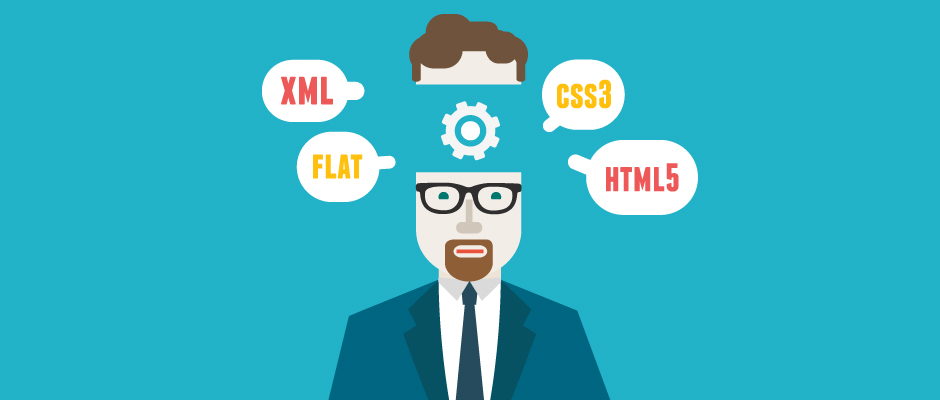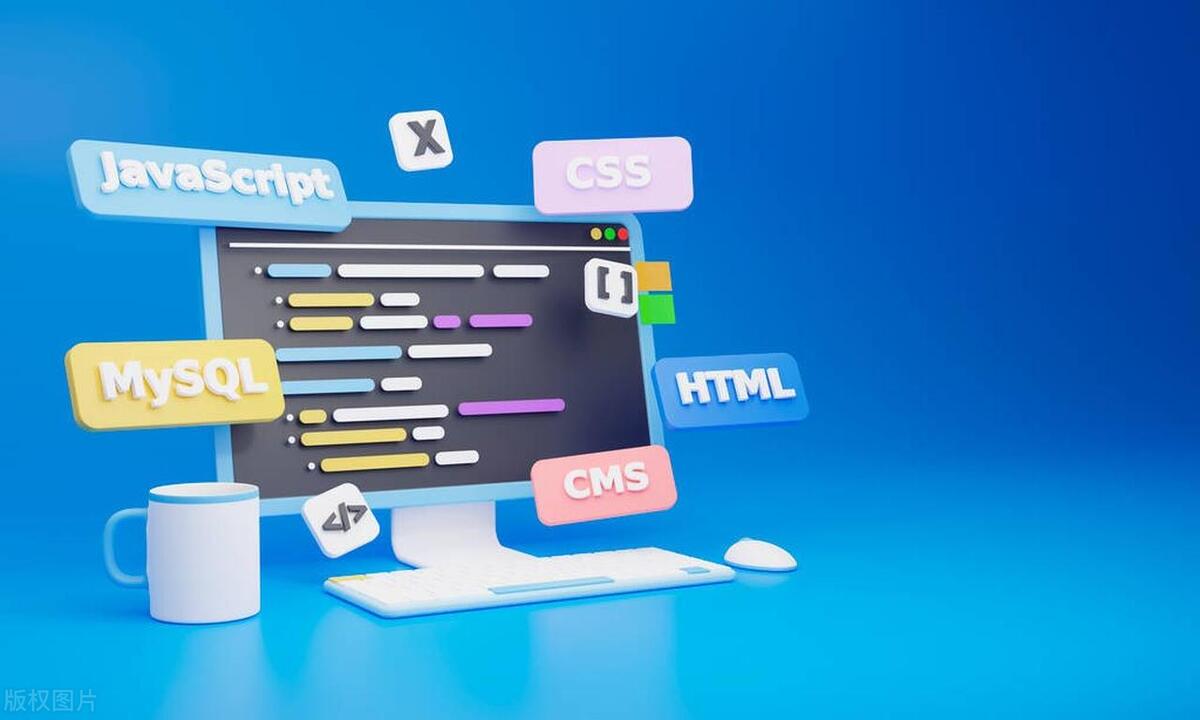Web Vitals and SEO: How Frontend Affects Search Ranking
Jul 20, 2025 am 02:39 AMFront-end development directly affects SEO, and Google uses Web Vitals as a ranking factor. 1. Largest Contentful Paint (LCP) measures the loading speed of the first screen. It is affected by image optimization, resource loading order and fonts. It is recommended to compress images, delay load non-first screen content, and inline key CSS. 2. First Input Delay (FID) reflects the fluency of the user's first interaction. It is affected by the efficiency of JS execution. It is recommended to reduce third-party scripts, use Web Workers, and split code packages. 3. Cumulative Layout Shift (CLS) reflects visual stability. Due to the lack of image size, asynchronous content loading, and font rearrangement, it is recommended to reserve placeholder, avoid inserting top content, and control font loading. Front-end optimization not only improves rankings but also improves user experience. The CMS system has integrated performance analysis functions. The front-end collaboration with SEO should focus on the experience significance behind the indicators.

The impact of front-end development on SEO is more direct than many people think. Search engines such as Google have clearly regarded Web Vitals as one of the ranking factors, which means that the loading speed, interaction response and visual stability of the website directly affect the location in the search results.

If you are a person who does content or operations, or you have a lot of dealing with front-end teams, understanding how these metrics are affected can help you have a more sense of direction when communicating with technology.
Largest Contentful Paint (LCP): How fast does the page "look" load?
LCP refers to the time when a user sees the largest piece of content (such as a picture or text) appear on the page. If this time is too long, users will feel that the page is stuttering and loading slowly.

How to do the front-end will affect it?
- Images are not optimized (too large, not compressed, not using modern formats such as WebP)
- The loading order of key resources is unreasonable (such as CSS or JS delays first-screen rendering)
- Too many fonts or improper font loading
Suggested practices:

- Compress the picture and use the right size
- Use
loading="lazy"to load non-first-screen images - Inline critical CSS to reduce blocking rendering resources
First Input Delay (FID): How smooth is the user's first operation of the page?
FID measures how quickly the page responds when a user first interacts with a page (such as clicking a button or selecting a drop-down menu). This has a lot to do with the execution efficiency of JavaScript.
Frequently asked questions include:
- Too many third-party scripts (advertising, statistical tools, etc.)
- The main thread is occupied for a long time (such as executing a large amount of JS)
- The JS package is not split, causing the main thread to block
Optimization suggestions:
- Reduce unnecessary third-party plugins
- Using Web Workers to handle complex calculations
- Split code packages, delay loading of non-essential functions
Cumulative Layout Shift (CLS): Will page elements jump randomly?
CLS reflects whether the page is visually stable during loading. For example, if a button is just clicked and moved down suddenly, the user may miss something else.
Common reasons:
- Images or ads are not set in fixed size
- Asynchronous loading changes layout
- Use of mismatched alternate fonts during font loading, resulting in reordering
How to avoid it?
- Leave space for all pictures and videos
- Avoid inserting new top content after the page loads
- Use
font-display: swapto control font loading behavior
Actual Impact: Web Vitals is not just "scores"
Although Google regards Web Vitals as one of the rating criteria, its essence is to improve the user experience. Search rankings are results, not goals. A good front-end can not only make search engines more willing to recommend your pages, but also make users more willing to stay.
Moreover, many CMS and website building platforms have begun to build Lighthouse analysis, and even automatically prompt optimization suggestions. If you use systems like WordPress or Shopify yourself, you can also pay attention to whether they provide performance scores and see if the front-end configuration is reasonable.
Basically that's it. The key to the linkage between front-end and SEO is to understand the user experience behind each metric, rather than just looking at the score. Some details look small, such as a picture without widening the height attribute, but may cause obvious CLS problems in the actual experience.
The above is the detailed content of Web Vitals and SEO: How Frontend Affects Search Ranking. For more information, please follow other related articles on the PHP Chinese website!

Hot AI Tools

Undress AI Tool
Undress images for free

Undresser.AI Undress
AI-powered app for creating realistic nude photos

AI Clothes Remover
Online AI tool for removing clothes from photos.

Clothoff.io
AI clothes remover

Video Face Swap
Swap faces in any video effortlessly with our completely free AI face swap tool!

Hot Article

Hot Tools

Notepad++7.3.1
Easy-to-use and free code editor

SublimeText3 Chinese version
Chinese version, very easy to use

Zend Studio 13.0.1
Powerful PHP integrated development environment

Dreamweaver CS6
Visual web development tools

SublimeText3 Mac version
God-level code editing software (SublimeText3)

Hot Topics
 How does React handle focus management and accessibility?
Jul 08, 2025 am 02:34 AM
How does React handle focus management and accessibility?
Jul 08, 2025 am 02:34 AM
React itself does not directly manage focus or accessibility, but provides tools to effectively deal with these issues. 1. Use Refs to programmatically manage focus, such as setting element focus through useRef; 2. Use ARIA attributes to improve accessibility, such as defining the structure and state of tab components; 3. Pay attention to keyboard navigation to ensure that the focus logic in components such as modal boxes is clear; 4. Try to use native HTML elements to reduce the workload and error risk of custom implementation; 5. React assists accessibility by controlling the DOM and adding ARIA attributes, but the correct use still depends on developers.
 Describe the difference between shallow and full rendering in React testing.
Jul 06, 2025 am 02:32 AM
Describe the difference between shallow and full rendering in React testing.
Jul 06, 2025 am 02:32 AM
Shallowrenderingtestsacomponentinisolation,withoutchildren,whilefullrenderingincludesallchildcomponents.Shallowrenderingisgoodfortestingacomponent’sownlogicandmarkup,offeringfasterexecutionandisolationfromchildbehavior,butlacksfulllifecycleandDOMinte
 What is the significance of the StrictMode component in React?
Jul 06, 2025 am 02:33 AM
What is the significance of the StrictMode component in React?
Jul 06, 2025 am 02:33 AM
StrictMode does not render any visual content in React, but it is very useful during development. Its main function is to help developers identify potential problems, especially those that may cause bugs or unexpected behavior in complex applications. Specifically, it flags unsafe lifecycle methods, recognizes side effects in render functions, and warns about the use of old string refAPI. In addition, it can expose these side effects by intentionally repeating calls to certain functions, thereby prompting developers to move related operations to appropriate locations, such as the useEffect hook. At the same time, it encourages the use of newer ref methods such as useRef or callback ref instead of string ref. To use Stri effectively
 Vue with TypeScript Integration Guide
Jul 05, 2025 am 02:29 AM
Vue with TypeScript Integration Guide
Jul 05, 2025 am 02:29 AM
Create TypeScript-enabled projects using VueCLI or Vite, which can be quickly initialized through interactive selection features or using templates. Use tags in components to implement type inference with defineComponent, and it is recommended to explicitly declare props and emits types, and use interface or type to define complex structures. It is recommended to explicitly label types when using ref and reactive in setup functions to improve code maintainability and collaboration efficiency.
 How to handle forms in Vue
Jul 04, 2025 am 03:10 AM
How to handle forms in Vue
Jul 04, 2025 am 03:10 AM
There are three key points to be mastered when processing Vue forms: 1. Use v-model to achieve two-way binding and synchronize form data; 2. Implement verification logic to ensure input compliance; 3. Control the submission behavior and process requests and status feedback. In Vue, form elements such as input boxes, check boxes, etc. can be bound to data attributes through v-model, such as automatically synchronizing user input; for multiple selection scenarios of check boxes, the binding field should be initialized into an array to correctly store multiple selected values. Form verification can be implemented through custom functions or third-party libraries. Common practices include checking whether the field is empty, using a regular verification format, and displaying prompt information when errors are wrong; for example, writing a validateForm method to return the error message object of each field. You should use it when submitting
 Server-Side Rendering with Next.js Explained
Jul 23, 2025 am 01:39 AM
Server-Side Rendering with Next.js Explained
Jul 23, 2025 am 01:39 AM
Server-siderendering(SSR)inNext.jsgeneratesHTMLontheserverforeachrequest,improvingperformanceandSEO.1.SSRisidealfordynamiccontentthatchangesfrequently,suchasuserdashboards.2.ItusesgetServerSidePropstofetchdataperrequestandpassittothecomponent.3.UseSS
 A Deep Dive into WebAssembly (WASM) for Front-End Developers
Jul 27, 2025 am 12:32 AM
A Deep Dive into WebAssembly (WASM) for Front-End Developers
Jul 27, 2025 am 12:32 AM
WebAssembly(WASM)isagame-changerforfront-enddevelopersseekinghigh-performancewebapplications.1.WASMisabinaryinstructionformatthatrunsatnear-nativespeed,enablinglanguageslikeRust,C ,andGotoexecuteinthebrowser.2.ItcomplementsJavaScriptratherthanreplac
 What is content security policy CSP
Jul 04, 2025 am 03:21 AM
What is content security policy CSP
Jul 04, 2025 am 03:21 AM
Content Security Policy (CSP) prevents attacks such as XSS by limiting the loading source of web page resources. Its core mechanism is to set a whitelist to prevent unauthorized scripts from being executed. The steps to enable include: 1. Define the policy and clarify the allowed resource sources; 2. Add Content-Security-PolicyHTTP header to the server; 3. Use Report-Only mode to test and debug in the initial stage; 4. Continuous monitoring and optimization strategies to ensure that they do not affect normal functions. Notes include handling inline scripts, careful use of third-party resources, compatibility support, and other irreplaceable security measures.






